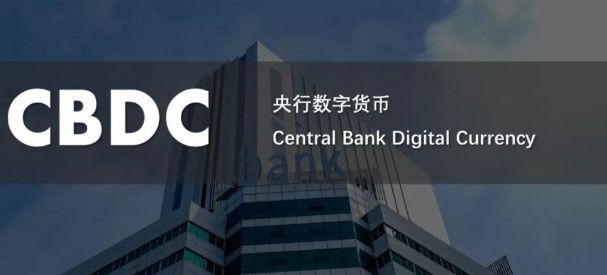Opinion | Central bank digital currency and other digital currencies, both temporarily or little impact
Compilation: Peter
Source: Vernacular Blockchain
On the issue of issuing their own digital currencies, central banks are always thundering and little rain. Central banks around the world are considering issuing their own digital currencies to compete with cryptocurrencies such as Bitcoin, but have been unable to act for a long time.
Media attention to the central bank ’s digital currency has risen significantly, especially as Zuckerberg testified before Congress on Libra, and Christina Lagarde acknowledged stability at the first media reception as President of the European Central Bank After the "clear demand" for currency, it seems to have changed the public's perception of the matter a bit, making many people in the cryptocurrency community think that CBDCs are right around the corner.
- 2019 DeFi Industry Research Report: DeFi lending continues to grow and expand in 2020, and stablecoins will continue to grow
- Technical Interpretation | On-chain Capacity Expansion Technology Guide (1): Data Layer and Network Layer
- Research Report | Analysis Report on Quantum Mechanics and Blockchain Security Technology
According to the latest survey report released by the Bank for International Settlements, central banks have been investigating this technology for the past seven years and assessing its impact. Fifty-five of the 63 central banks participating in the survey believe that they are unlikely to issue in the next three years, and only one central bank reports that they are "very likely to issue large-scale CBDCs in the next three to six years."
Although central banks are currently (or will soon) be studying a high percentage of CBDCs, the point is that this is mainly theoretical, investigative work. Only five central banks have conducted more in-depth research and conducted real project development or experiments-but this still does not indicate that they will necessarily issue CBDCs.
After a close observation, it became more and more clear that whether it was the recent Libra released by Facebook or the new stablecoin asset, it had a significant impact on the central bank. Today's situation has been formed for hundreds of years, but changed within a few months; the scariest and strangest conception that has penetrated into the elite society of the central bank has never been thought of before-competition is now Knock on the door.
It can be said that the solution to the current situation is still unclear. Some people who are more familiar with these things even say that this is a bluff. However, in Lagarde's own words, taking the time and looking at it are no longer sufficient.
01What is the central bank digital currency?

CBDC is a new form of currency that is directly issued by the central bank in digital form as fiat currency. The current form of fiat currency is cash, reserve deposits or balance settlement.
There are two main differences between CBDC and other digital currencies (including cryptocurrencies and other forms of central bank currencies):
1. CBDC has nothing to do with crypto assets. They are not decentralized, they do not necessarily have to be based on the blockchain, and they are certainly not anonymous, not permissionless, and resistant to censorship.
2. In contrast to current digital cash, the operating structure of CBDC will be different from other forms of central bank currency. CBDC is more powerful, they are programmable, they can generate interest, can be cleared in near real time, the fees are cheaper, and the degree of openness is wider.
When the CBDC is really designed, the speed of central banks is not the same. Different central banks have adopted their own methods. But in general, there are three questions being explored. Should the CBDC be based on tokens or account numbers, and should the CBDC be batch (only open to banks) or retail (open to the public), and should it be based on DLT?
When it comes to actually landing a CBDC, things get complicated and there are many tricky issues to consider.
For example, once the CBDC is launched, do I need to cancel the cash? Should CBDC carry interest? Should they have face value like cash? Or linked to the total price index? What impact will this have on commercial banks? What about anonymous and privacy issues? All these questions need to be answered.
02 Motivation to issue CBDC

In a 2017 employee discussion paper, the Bank of Canada gave six reasons for issuing a CBDC in an article entitled "Central Bank Digital Currency: Motivation and Impact":
- Ensuring that the central bank provides sufficient cash to the public, and maintaining the central bank's coinage revenue
- Lower interest rate floor and support non-traditional monetary policy
- Reduce overall risk and improve financial stability
- Increase the competitiveness of payments
- Promote financial inclusion
- Curb criminal activity
Looking back at the BIS survey we analyzed earlier, payment security and domestic efficiency were selected as the most important motivations for central banks. According to a large number of papers published by the central bank and other large financial institutions, for developed countries, the transition to a cashless society is the main driving factor, while for developing countries, financial inclusion, reducing costs and improving operational efficiency are The main motivation.
Throughout the rest of the report and the literature that can be found, the fierce competition brought about by Bitcoin and other innovations in the cryptocurrency industry, as well as the clear need for "one step ahead", of course, have not been listed as reasons for issuing a CBDC .
03 Advantages of CBDC and extremely low potential risks

If the central bank starts rolling out the CBDC and it succeeds in the end, there are many potential benefits.
From a technical point of view, CBDC is much better than the current fiat currency form. They can be better tracked, more convenient to collect taxes, better pass monetary policy, have better financial tolerance, and reduce the production of physical currency. the cost of.
The most obvious advantage is that payments are cheaper and faster, both domestically and cross-borderly.
In addition to the design and implementation challenges, a key issue for issuing a CBDC is that it may increase the risk of bank operations. However, this only happens when the bank promises that the bank's deposits can be exchanged for CBDC on demand, according to this document from the Bank of England, this does not necessarily happen.
04 Facts on the Ground

How far away do we see a real CBDC appear on the market? This is difficult to estimate, but for now, we can summarize the current situation in one sentence: just say it without practice.
If we put aside the failed digital currencies of Ecuador, Tunisia, and Venezuela, all we can do is theoretical research, a small number of experiments, and release of some feasible state-backed CBDC announcements.
The most well-known ongoing CBDC projects are: E-peso in Uruguay (the project was successfully tested in 2018), DCEP in China, “Project Inthanon,” in Thailand, and E-krona in Sweden (still under investigation) …
05 The revolution has not yet succeeded, comrades still need to work hard
Considering the factors mentioned earlier, most of the headlines about CBDC's forthcoming headlines are unfounded. All projects scheduled for release this year have been delayed.
In fact, CBDC still has a long way to go before it is born, and to convince the public, more than just a statement is needed. Given the current situation, it looks like CBDC has no influence on other cryptocurrencies-at least for now.
Message mining issue 413: How would you describe the relationship between the central bank's digital currency and other digital currencies? why? Welcome to share your views in the message area.
——End——
"Disclaimer : The source of this article is CRYPTO, the original author is Stefan Stankovic , the translator's deletion, does not represent the vernacular blockchain position, nor does it constitute any investment opinions or suggestions. The copyright of the article and the final interpretation right belong to the vernacular blockchain. A
We will continue to update Blocking; if you have any questions or suggestions, please contact us!
Was this article helpful?
93 out of 132 found this helpful
Related articles
- IMF urges Philippine central bank to collect crypto exchange transaction data and use data for macroeconomic analysis
- Technology Dry Goods | Zero Knowledge Proof Learn by Coding: An Introduction to libsnark
- The main theme of foreign media reports in 2019: cryptocurrencies will not "die"
- Suzhou released 30 new industrial policies, including the construction of fintech supervision sandbox (full text)
- Bitcoin network UTXO reaches 64.5 million, continues to grow and hits record high
- QKL123 Blockchain List | Market Activity Declines, Mining Machines Are Renewed (201912)
- Alibaba releases 2019 annual report on counterfeiting: assisting 439 districts and counties to introduce counterfeiting





